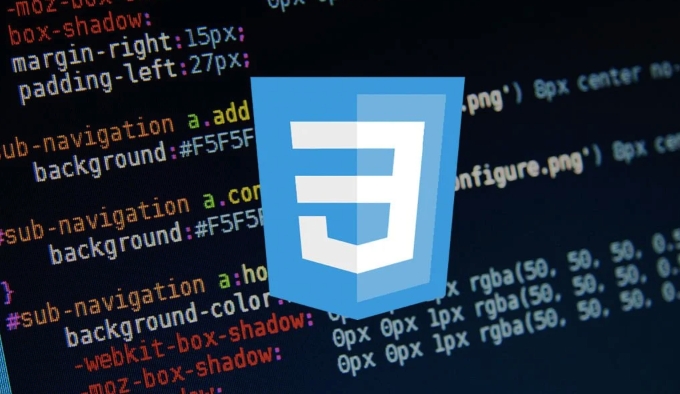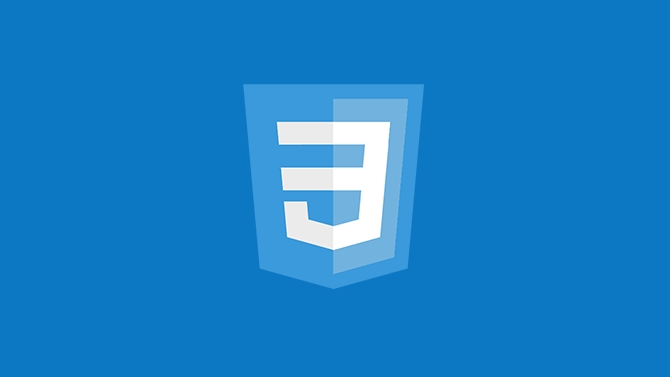The ::before and ::after pseudo-elements of CSS can insert content before and after HTML elements, and are often used to add decorations, icons or separators; 1. It must be used with the content attribute and can be an empty string; 2. The insertion content is an inline element and cannot be operated by default through JS; 3. Common uses include inserting arrows, dots, logos, etc., which support attr() to obtain attribute values, Unicode characters, font icons and background images; 4. It can be combined with selectors such as nth-child and class names to achieve fine-grained control; 5. Be careful not to act on self-closed tags, hierarchies may be overwritten, affect accessibility and old IE compatibility issues.

With CSS's ::before and ::after pseudo-elements, you can easily insert content before or after HTML elements without modifying the HTML structure. They are often used to add decorative content, icons, separators, etc.

But to really use these two pseudo-elements well, there are several key points to pay attention to, especially when used with the CSS selector.

Basic syntax and required properties
::before and ::after need to be used with content attribute, otherwise it will not take effect.
The basic structure is as follows:
selector::before {
content: "Inserted content";
/* Can add style*/
}
selector::after {
content: "";
}- <li>
content is required, even if it's just an empty string (like you just want to insert an icon background).<li> The inserted content is "generated content", which is an inline element by default. You can set display: block or other layout methods.<li> These contents do not exist in the DOM and cannot be retrieved or operated through JS.Use scenario: Add decorative content or small icon
Common uses include adding an arrow symbol after a link, adding a small dot before the title, or adding a mark to elements of certain specific class names.

For example:
.link::after {
content: " →";
color: #007bff;
} This way, all elements with the .link class will be followed by a blue arrow.
Common Tips:
- <li> Use
attr() to insert HTML attribute value, such as content: attr(data-label) .<li> Use Unicode characters or font icons, such as content: "\2192" to represent the right arrow.<li> To display the image icon in conjunction with background-image , content can be an empty string.How to combine CSS selector with more flexible control
You can place ::before and ::after behind almost any legitimate CSS selector to achieve finer granular control.
Example 1: Apply only to specific child elements
li:nth-child(odd)::before {
content: "? ";
color: green;
} This code will precede <li> of each odd digit with a green check mark.
Example 2: Add different styles according to the class name combination
.message.warning::before {
content: "?? ";
}
.message.error::before {
content: "? ";
}This way, different icons can be automatically inserted according to different class names.
Commonly used matching selectors:
-
<li>
.class::after
<li> element#id::before
<li> a:hover::after
<li> p:first-of-type::before
Notes and FAQs
While pseudo-elements are practical, there are some limitations and error-prone areas:
-
<li> Cannot act on self-closing tags : tags like
<img alt="How to use ::before and ::after pseudo-elements with CSS Selectors?" > and <input> cannot use ::before or ::after .
<li> Hierarchy problem : The default z-index of the pseudo-element is low and may be overwritten by other elements. If necessary, position and z-index need to be set.
<li> Impact accessibility : The content in the pseudo-element will not be read by the screen reader and is not suitable for placing important information.
<li> Browser Compatibility : Modern browsers support it, but there may be compatibility issues in older versions of IE.
Basically that's it. After mastering these key points, you can flexibly use ::before and ::after on various selectors to enhance the expressiveness of the page.
The above is the detailed content of How to use ::before and ::after pseudo-elements with CSS Selectors?. For more information, please follow other related articles on the PHP Chinese website!

Hot AI Tools

Undress AI Tool
Undress images for free

Undresser.AI Undress
AI-powered app for creating realistic nude photos

AI Clothes Remover
Online AI tool for removing clothes from photos.

Clothoff.io
AI clothes remover

Video Face Swap
Swap faces in any video effortlessly with our completely free AI face swap tool!

Hot Article

Hot Tools

Notepad++7.3.1
Easy-to-use and free code editor

SublimeText3 Chinese version
Chinese version, very easy to use

Zend Studio 13.0.1
Powerful PHP integrated development environment

Dreamweaver CS6
Visual web development tools

SublimeText3 Mac version
God-level code editing software (SublimeText3)

Hot Topics
 What is 'render-blocking CSS'?
Jun 24, 2025 am 12:42 AM
What is 'render-blocking CSS'?
Jun 24, 2025 am 12:42 AM
CSS blocks page rendering because browsers view inline and external CSS as key resources by default, especially with imported stylesheets, header large amounts of inline CSS, and unoptimized media query styles. 1. Extract critical CSS and embed it into HTML; 2. Delay loading non-critical CSS through JavaScript; 3. Use media attributes to optimize loading such as print styles; 4. Compress and merge CSS to reduce requests. It is recommended to use tools to extract key CSS, combine rel="preload" asynchronous loading, and use media delayed loading reasonably to avoid excessive splitting and complex script control.
 External vs. Internal CSS: What's the Best Approach?
Jun 20, 2025 am 12:45 AM
External vs. Internal CSS: What's the Best Approach?
Jun 20, 2025 am 12:45 AM
ThebestapproachforCSSdependsontheproject'sspecificneeds.Forlargerprojects,externalCSSisbetterduetomaintainabilityandreusability;forsmallerprojectsorsingle-pageapplications,internalCSSmightbemoresuitable.It'scrucialtobalanceprojectsize,performanceneed
 Does my CSS must be on lower case?
Jun 19, 2025 am 12:29 AM
Does my CSS must be on lower case?
Jun 19, 2025 am 12:29 AM
No,CSSdoesnothavetobeinlowercase.However,usinglowercaseisrecommendedfor:1)Consistencyandreadability,2)Avoidingerrorsinrelatedtechnologies,3)Potentialperformancebenefits,and4)Improvedcollaborationwithinteams.
 CSS Case Sensitivity: Understanding What Matters
Jun 20, 2025 am 12:09 AM
CSS Case Sensitivity: Understanding What Matters
Jun 20, 2025 am 12:09 AM
CSSismostlycase-insensitive,butURLsandfontfamilynamesarecase-sensitive.1)Propertiesandvalueslikecolor:red;arenotcase-sensitive.2)URLsmustmatchtheserver'scase,e.g.,/images/Logo.png.3)Fontfamilynameslike'OpenSans'mustbeexact.
 What is Autoprefixer and how does it work?
Jul 02, 2025 am 01:15 AM
What is Autoprefixer and how does it work?
Jul 02, 2025 am 01:15 AM
Autoprefixer is a tool that automatically adds vendor prefixes to CSS attributes based on the target browser scope. 1. It solves the problem of manually maintaining prefixes with errors; 2. Work through the PostCSS plug-in form, parse CSS, analyze attributes that need to be prefixed, and generate code according to configuration; 3. The usage steps include installing plug-ins, setting browserslist, and enabling them in the build process; 4. Notes include not manually adding prefixes, keeping configuration updates, prefixes not all attributes, and it is recommended to use them with the preprocessor.
 What are CSS counters?
Jun 19, 2025 am 12:34 AM
What are CSS counters?
Jun 19, 2025 am 12:34 AM
CSScounterscanautomaticallynumbersectionsandlists.1)Usecounter-resettoinitialize,counter-incrementtoincrease,andcounter()orcounters()todisplayvalues.2)CombinewithJavaScriptfordynamiccontenttoensureaccurateupdates.
 CSS: When Does Case Matter (and When Doesn't)?
Jun 19, 2025 am 12:27 AM
CSS: When Does Case Matter (and When Doesn't)?
Jun 19, 2025 am 12:27 AM
In CSS, selector and attribute names are case-sensitive, while values, named colors, URLs, and custom attributes are case-sensitive. 1. The selector and attribute names are case-insensitive, such as background-color and background-Color are the same. 2. The hexadecimal color in the value is case-sensitive, but the named color is case-sensitive, such as red and Red is invalid. 3. URLs are case sensitive and may cause file loading problems. 4. Custom properties (variables) are case sensitive, and you need to pay attention to the consistency of case when using them.
 What is the conic-gradient() function?
Jul 01, 2025 am 01:16 AM
What is the conic-gradient() function?
Jul 01, 2025 am 01:16 AM
Theconic-gradient()functioninCSScreatescirculargradientsthatrotatecolorstopsaroundacentralpoint.1.Itisidealforpiecharts,progressindicators,colorwheels,anddecorativebackgrounds.2.Itworksbydefiningcolorstopsatspecificangles,optionallystartingfromadefin






